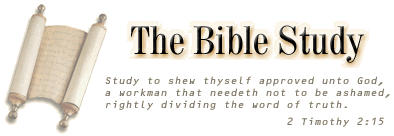Not a Book, But a Roll!
Early literary
writing materials
In the ancient world, down to the second century A.D., the form of literary work was the roll, not the book. The roll was made of papyrus, which we shall later go on to describe. Papyrus was manufactured in single sheets about ten inches by eight. The sheets were joined together horizontally when a great deal of writing had to be done. The writing was in narrow columns about three inches long, with margins of about two and a half inches at the top and at the bottom, and with about three-quarters of an inch between the columns. The roll commonly had a wooden roller at each end. It was held in the left hand, unrolled with the right, and, as the reading went on, the part in the left hand was rolled up again.
We may get some idea of the dimensions of a roll from the following statistics. The epistles of 2 and 3 John, Jude and Philemon would occupy one sheet of papyrus; the letter to the Romans would require a roll 11.5 feet long; the Gospel of Mark, 19 feet; John, 23.5 feet; Matthew, 30 feet; Luke and Acts, 32 feet. The Revelation would occupy a roll 15 feet long.
Papyrus was a substance made from the pith of a bulrush which grew in the delta of the Nile. The bulrush was about fifteen feet high, with six feet of it below the water; and it was as thick as a man's wrist. The pith was extracted. It was cut into thin strips with a very sharp knife. A row of strips was laid vertically; on the top of them another row of strips was laid horizontally; the whole was then moistened with Nile water and glue; it was then pressed together. The resulting substance was beaten with a mallet and then smoothed with pumice stone; and there emerged a substance not unlike brown paper.
From this description it will be seen that on one side the grain of the papyrus would run horizontally; that side was known as the recto; and on that side the writing was done, as it was easier to write on the side on which the lines of the writing ran with the lines of the fibre of the papyrus. The side on which the fibers ran vertically was called the verso, and was not so commonly used for writing.
But papyrus was an expensive substance. Its quality varied and the price varied with the quality. So, if a person had a great deal to write, he wrote on the front and on the back of the sheet. A sheet written on the back, on the verso, was called an opisthograph, that is, a sheet written behind; and when a person did so use his papyrus sheets, it showed that he had a tremendous amount of material to set down.
William Barclay
![]()
